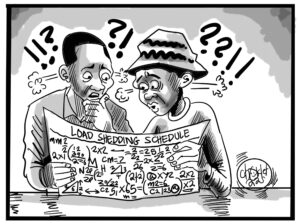UPND mines and mineral development chairman Percy Chanda says the UPND government will undertake a major tax policy and administration reform that will bring various stakeholders on board to design a good tax administration system which can stand the test of time.
And Chanda says the nine times that government has changed the mining fiscal regime in the last 18 years has not sent a good signal to investors.
In UPND’s weekly newsletter to News Diggers! Chanda pledged that a UPND administration would overhaul the mining fiscal regime to establish a fairer, more equitable tax administration policy that would benefit all stakeholders.
“It is in this regard that the UPND in government shall undertake a major tax policy and administration reform that will bring various stakeholders on board to design a good tax administration system with broad policy consideration that will stand the test of time. These broad policy considerations sometimes referred to as principles of taxation shall include: (I) Neutrality: Tax shall must be neutral and equitable between forms of business activities.(II) Equity: Tax payers in a similar situation should be taxed similarly. Horizontal equity – taxpayers with equal ability to pay should pay the same amount of taxes,” Chanda narrated.
“(III) Vertical equity – taxpayers with a greater ability to pay should pay more taxes. (IV) Certainty: Tax rules should clearly specify when and how a tax is to be paid and how the amount will be determined. (V) Efficiency: Compliance costs to business and administration costs for governments shall be minimized as far as possible. Effectiveness and fairness: Taxation should produce the right amount of tax at the right time, while avoiding both double taxation and unintentional non-taxation. Reform: Worldwide, tax is the most difficult to administer, ZRA shall need to be reformed to ensure that a broader tax base is created.”
He observed that from 2000 when the Zambia Consolidated Copper Mines (ZCCM) assets were sold to the private sector, government had changed the mining tax regime nine times.
“How many times has the government changed the mining tax regime since 2000, when the mines were privatised? From 2000, when ZCCM assets were sold to the private sector, government has changed the mining tax regime nine times,” Chanda stated.
Chanda highlighted some of the mining tax regimes since 2000.
“Some of these regimes include: (I) The 2000 Regime (April 2000 – March 2006) – This regime provided tax concessions to companies that bought the assets of the former ZCCM assets (KCM and MCM). (II) The “2008 regime” (April 2008–March 2009) – The 2008 reforms passed as part of the 2008 Mines and Minerals Act ruled that the government should not enter into any special agreements for the development of large-scale mining licenses; the reforms also annulled the development agreements. The Act introduced a new tax regime with a higher tax burden: it set the company income tax rate at 30 per cent; it introduced a variable income tax and raised the mineral royalty rate to three percent from 0.6 per cent; and it set the withholding tax on services at 15 per cent and introduced a windfall tax,” he stated.
“(III) The “2009 regime” (April 2009–March 2012) – In response to the mining companies’ concerns about the revocation of the development agreements, the government reversed the lower capital depreciation allowance and some other 2008 tax measures such as the windfall tax in its 2009 budget. (IV) The “2019 Regime” (January 2019 – onward) – Increased the royalty rate by 1.5 percentage points at all levels, introduced 10 per cent mineral royalty when copper prices are above US $7,500 per metric tonne and make mineral royalties not deductible.”
Chanda further observed that Zambia’s mineral royalty rates had exceeded the global norm as major mineral producers charged less than six per cent, while the highest rate in Zambia was now 10 per cent.
“How does Zambia’s mining taxation compare with our countries? First, Zambia’s mineral royalty rates have exceeded the global norm as major mineral producers charge less than 6 per cent, while the highest rate in Zambia is now 10 per cent. Second, Zambia’s royalty base is gross value meaning no expenses are allowed to be deducted before calculating mineral royalty,” he stated.
“Third, Zambia’s mineral royalty is not deductible for income tax purposes meaning the Zambia Revenue Authority will not recognise the amount paid in mineral royalties as allowable expenditure when calculating the taxable profit for purposes calculating profit tax. Fourth, Zambia may be the only country with a variable profit tax, which ranges from 0-15 per cent and which is over and above the normal profit tax, which is already at 30 per cent.”
Chanda noted that it was clear that Zambia’s mining tax regime was very punitive and could be the highest in the whole world.
He also observed that changing the mining fiscal regime nine times in the last 18 years and four times in the last four years did not send a good signal to the investors.



















